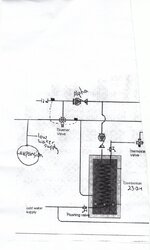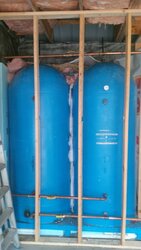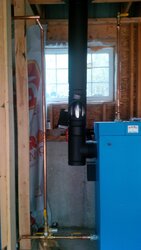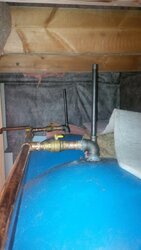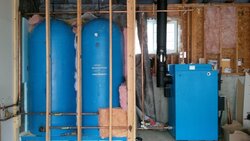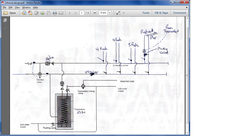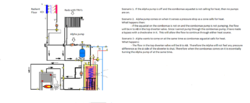ewdudley
Minister of Fire
My welder cannot come to change my tank fittings until later next week.
If you have a 3/4" fitting in the top of each tank that could well be entirely adequate. Your only talking maybe 15 gpm maxed out, which is only 5.5 feet per second through each fitting. Normally with a deltaT of 40 degF and a realistic boiler output of 175,000 btu per hour the flow through each 3/4" fitting would be less than 3 feet per second.
With 1 1/4" piping in the rest of the circuit, the added resistance would not amount to much at all. To be clear, I'm not suggesting that you run 3/4" inch pipe for the whole circuit, I'm just saying that two short 3/4" restrictions in parallel won't matter.
Some will warn of mixing from jetting the hot water in at the top, but I've come to the conclusion that that may not be such a big deal at all. While storage is filling there would normally be plenty pure hot water left over to satisfy loads. And by the time storage is completely filled the whole tank will be hot top to bottom, so some mixing at the top is mox nix.
When drawing from storage the smaller fittings at the top would be irrelevant.
Last edited:


